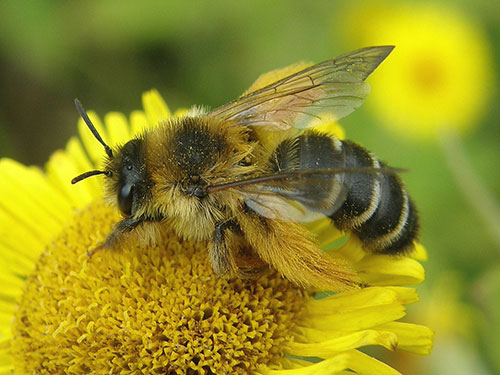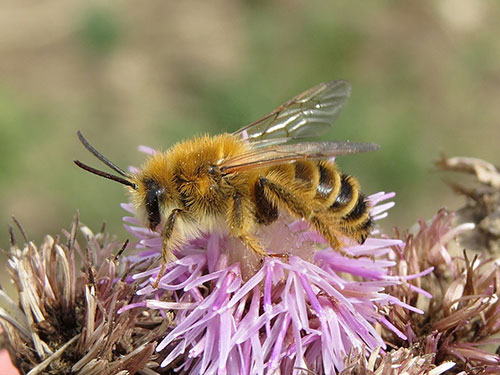


Female Dasypoda hirtipes at Stanpit Marsh NR, Dorset
Photo: Steven Falk

Male Dasypoda hirtipes at Coryton, Essex
Photo: Steven Falk

Dasypoda hirtipes records in Sussex, showing mainly coastal and heathland distribution.
Who can resist the Pantaloon Bee (Dasypoda hirtipes)? With its extraordinary, beautifully coloured hind legs, it is a strikingly handsome insect. It also shouldn’t be hard to miss. It is, however, a very scarce bee with just 103 records for Sussex, all from areas with sandy soils. Its on the wing throughout July, throughout August and in some years into early September so is well worth keeping an eye out for.
Nationally, its restricted to Southern England, the Welsh coast and some Midland locations, with most records from coastal and heathland areas within a band that stretches from the Norfolk coast to Dorset.
The distribution in Sussex is also largely restricted to heathland and coastal areas with most modern records from the heaths of West Sussex and from the Hastings, Rye Harbour and Camber Sands area. There have also been sporadic records from coastal areas such as Newhaven, Seaford Head and Pagham Harbour.
The females tend to excavate their nests in close proximity to each other and there can be hundreds of tunnels excavated close together. And because the nest entrance is excavated at an angle to the surface, a fan-shaped deposit of sand is kicked out by the females, making this a characteristic of the species.
The Pantaloon Bee collects pollen from a narrow range of plants within the Asteraceae family, principally those with yellow flowers such as Common Ragwort, Common Fleabane and Cat’s-ear and is also seen on thistles.
Anywhere with light, sandy soils is worth a look for this species and a record supported by a photo will help to confirm the identification. Good luck!
If you do find Pantaloon Bees, please send your records (with photos) to bobforeman@sussexwt.org.uk.
James Power
Sussex Bees and Wasps Recording Group
Every month it is our aim to highlight a species that is “in-season” and, although not necessarily rare or difficult to identify, has been highlighted by our local recording groups as being somewhat under-recorded and for which new records would therefore be welcomed.
If you or your recording group are aware of species such as this then please contact Bob Foreman.